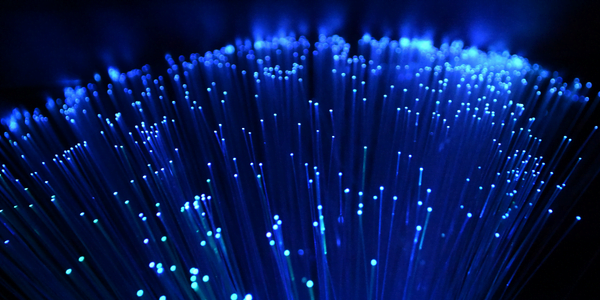There are two main networks that supply broadband and internet connectivity throughout the UK; Openreach and Virgin.
There are also many alternative networks that supply services to specific locations, these networks often offer a high-quality product aimed at supplying connectivity in areas where it’s less widely available.
We at Connecting Britain are partnered with many of these, meaning we can get you connected where others can’t.
So, here are the main 7 types of Broadband available across the UK over both of the traditional networks and Alternative networks. Each type of broadband connection offers a different speed and reliability.
Asymmetric digital subscriber line (ADSL) –
This kind of outdated broadband connection was originally adapted in the mid 20’th century.
As you can imagine, connectivity technology has improved considerably in the past few decades, with ADSL quickly getting left in the past. Using a copper connection from the internet exchange to your premises, an ADSL line is prone to serious degradation and can be extremely unreliable.
Average speeds are up to 18mb/s Download and 1mb/s Upload, practically Jurassic compared to speeds available with Fibre.
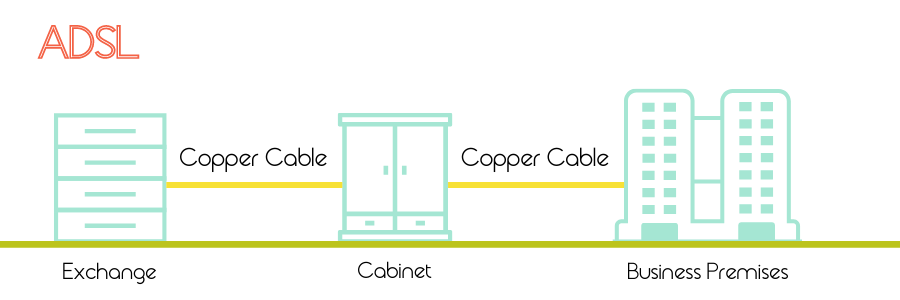
Fibre to the Cabinet (FTTC) –
Fibre to the cabinet is a connection that uses a fibre cable for the first half of its journey, from the exchange to your nearest cabinet. For the remaining journey, from the cabinet to your business, a copper line is used. This is where contention is higher, and your connection is more prone to degradation. This means that the further the copper wire must travel, the less dependable your connection will be.
Speed capability of an FTTC connection is up to 80mb/s Download and 20mb/s Upload
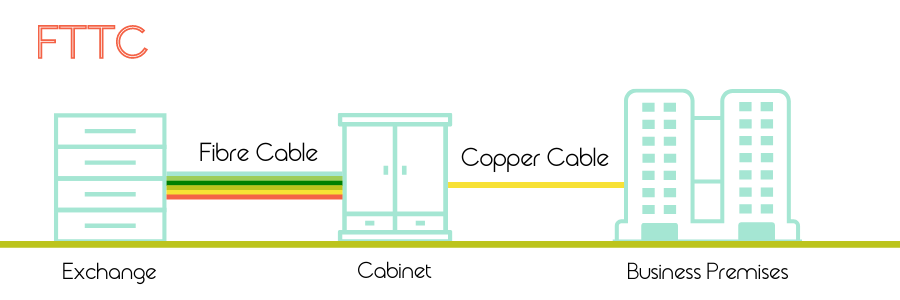
SoGEA (Single order Generic Ethernet Access) –
SoGEA fibre is a BT product, offered on the Openreach network. SoGEA is a technology similar to the FTTC, however the last part of the journey is carried through an Ethernet cable. This supplies a higher guarantee of speed and reliability through a lower degradation rate and less contention on the network.
The speed Capability is also 80mb/s Download and 20mb/s Upload, but the ethernet cable rather than copper brings a higher level of reliability with those speeds.

Virgin Broadband –
A connection on the traditional Virgin Broadband network is a great mid-tier choice, however Virgin broadband only available across selected areas of the UK.
There is a common misconception about the technology that Virgin uses for their broadband connections. Many believe their virgin broadband connection to be Full Fibre, when in fact that’s not quite true. Virgin use a technology called Coaxial cable, in a similar way to that of an FTTC. The last part of the journey is made with a Coaxial cable and the first part, from the exchange to the cabinet, is often a fibre connection. So, whilst high speeds are available, it’s not got the speed and resilience of a full fibre connection.
There are many different packages available across Virgins Business broadband. They now offer up to 1GB download however, they have a limited upload speed of up to 50mb/s which is not quite at the same tier as a full fibre connection.

Fibre to the Premises (FTTP) –
Fibre to the premises is a connection provided through the BT Openreach network that includes a full fibre cable for each leg of its journey, from the exchange all the way to your premises. By replacing the last leg of the journey with Fibre cable, the contention rates lessen so your higher speeds are more guaranteed, and the reliability of your connection improves tenfold.
The capability of this type of connection would be Download speeds up to 1GB and Upload speeds up to 115mb/s. Considerably better than speeds available with mid and low tier connections.
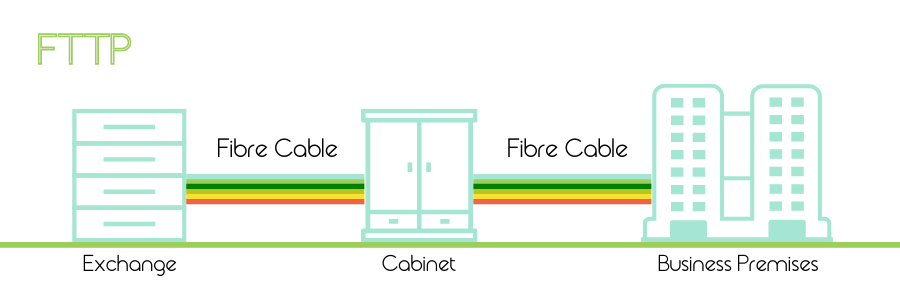
Fibre light (mini Leased Line) –
Through the faster Britain campaign powered by independent network providers ITS, Fibre light is an exclusive Full Fibre broadband connection for businesses. This kind of connection is not accessible through traditional networks such as BT Openreach or Virgin.
With symmetrical speeds of up to 1GB Fibre Light is perfect for small to medium businesses who want to do big things. As Fibre Light is a mini leased line there’s a low contention rate of 8:1, this means you’ll only ever be sharing your line with a maximum of 7 other businesses, ensuring that you always get the speed and performance you need.
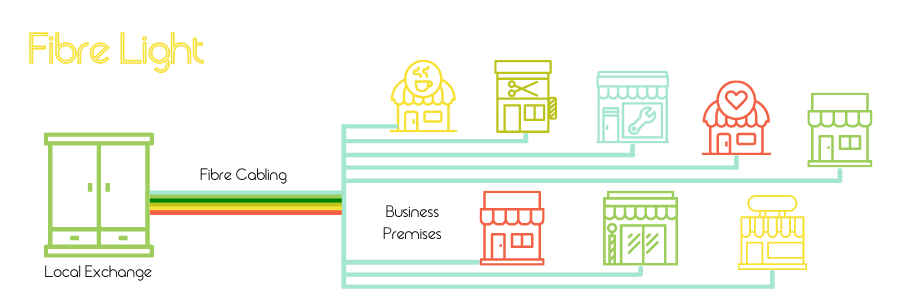
Fibre Bright (Leased Line) –
A Leased Line connection is for businesses with large internet usage, willing to spend more for the highest quality product. It is a top tier connection, with a parallel speed capability. It is completely uncontended and runs direct from the exchange to your premises. Fibre Bright delivers an identical upload and download speed of up to 10GB, supplying Enterprise-grade internet access and creating a resilient data network. The speeds capable on a leased line range from anywhere between 100MB to 10GB. Often supplied through alternative networks, such as ITS with their Fibre Bright connection.

Business connectivity is no longer just about sending emails and browsing the web, so whether you’re a Small, Medium or a Large Enterprise business, it’s important that you have the full story on fibre.
You can find out more about how Connecting Britain is connecting businesses with the future of technology.
Our team are always on hand to ensure you have what you need to get the job done, with ultrafast connectivity and hosted telephone systems plus much more. To find out more, contact us now!

